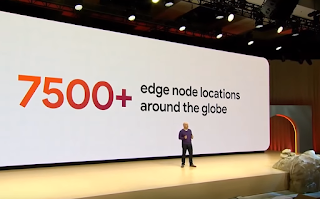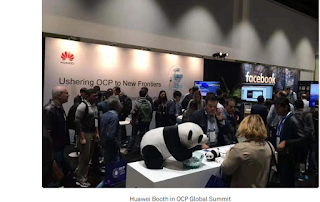Google unveiled its Stadia cloud gaming service at the Game Developers Conference (GDC) in San Francisco.
 Stadia is a cloud streaming service "for all types of devices capable of running a Chrome browser" and not requiring a gaming console.
Stadia is a cloud streaming service "for all types of devices capable of running a Chrome browser" and not requiring a gaming console.
 Stadia will launch later this year in the U.S., Canada, UK, and Europe. Stadia will support up to 4K HDR at 60 FPS. An Internet connection of at least 25 Mbps downstream is required. Eventually, Stadia expects to support up to 8K resolutions and 120 fps. In addition to the 4K 60 FPS connection to the player, the Stadia network can also deliver a 4K 60 FPS stream to YouTube so that the action can be saved and shared as a video.
Stadia will launch later this year in the U.S., Canada, UK, and Europe. Stadia will support up to 4K HDR at 60 FPS. An Internet connection of at least 25 Mbps downstream is required. Eventually, Stadia expects to support up to 8K resolutions and 120 fps. In addition to the 4K 60 FPS connection to the player, the Stadia network can also deliver a 4K 60 FPS stream to YouTube so that the action can be saved and shared as a video.
To deliver the service, Google will leverage its global backbone and its 8,500 edge node locations around the world. Google is working with AMD to produce a 10.7 teraflop GPU that will be custom servers its data centers and edge locations.
 Stadia is a cloud streaming service "for all types of devices capable of running a Chrome browser" and not requiring a gaming console.
Stadia is a cloud streaming service "for all types of devices capable of running a Chrome browser" and not requiring a gaming console. Stadia will launch later this year in the U.S., Canada, UK, and Europe. Stadia will support up to 4K HDR at 60 FPS. An Internet connection of at least 25 Mbps downstream is required. Eventually, Stadia expects to support up to 8K resolutions and 120 fps. In addition to the 4K 60 FPS connection to the player, the Stadia network can also deliver a 4K 60 FPS stream to YouTube so that the action can be saved and shared as a video.
Stadia will launch later this year in the U.S., Canada, UK, and Europe. Stadia will support up to 4K HDR at 60 FPS. An Internet connection of at least 25 Mbps downstream is required. Eventually, Stadia expects to support up to 8K resolutions and 120 fps. In addition to the 4K 60 FPS connection to the player, the Stadia network can also deliver a 4K 60 FPS stream to YouTube so that the action can be saved and shared as a video.To deliver the service, Google will leverage its global backbone and its 8,500 edge node locations around the world. Google is working with AMD to produce a 10.7 teraflop GPU that will be custom servers its data centers and edge locations.




















